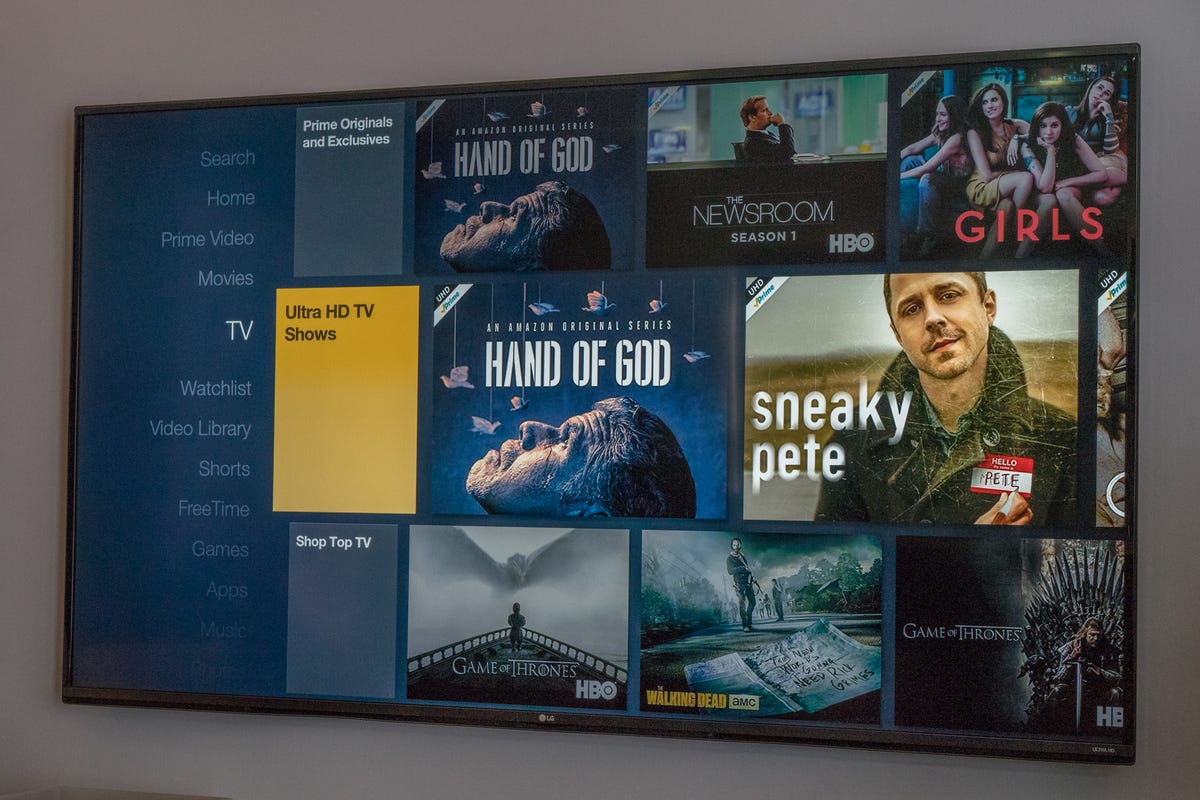 Enlarge Image
Enlarge ImageNate Ralph/CNET
SAN FRANCISCO — David Limp, Amazon’s devices chief, puts two tablets on the table. One is a 10.1-inch Fire HD, among the e-commerce giant’s newest tablets. The other is an Apple iPad Air. The Fire HD has a few battered edges; the iPad’s screen is shattered.
Both went through stress tests at Amazon’s lab in Sunnyvale, California, Limp said, and the Amazon tablet emerged relatively unscathed.
The setup is more than a comparison of durability, though. It also symbolizes Amazon’s growing rivalry with Apple.
On Thursday, Amazon unveiled four new tablets and three television-related devices. This is the lineup Amazon will use to lure consumers during the all-important holiday-shopping season. Among the tablets, there are two new HD, or high-definition, devices , a $50 budget tablet and a “Kids Edition” tablet with a heavy-duty case. On the TV side, the new products include a $100 4K ultra-HD TV set-top box, a game controller and a video-streaming device with a remote control that does voice search.
“In the TV space, I think we go very much more head-to-head with Apple,” Limp said during a press briefing here Wednesday.

 Enlarge Image
Enlarge ImageRichard Nieva/CNET
This is a rivalry, but not in the way you might expect. Apple and Amazon are attacking the consumer electronics world in very different ways. Apple does it with high-end, pricey devices. Its cheapest tablet is $270. Amazon courts a more budget-conscious consumer. Its least-expensive tablet costs $50.
For Amazon, the goal of selling hardware is to get people to spend money in its marketplace on items like movies, books, music and clothes. For Apple, the goal of selling expensive hardware is selling expensive hardware. That’s where Apple makes its money, but it also ties people to Apple’s world of software and services — where people also buy music and movies.
“It’s a growing rivalry at the services level,” said Tim Bajarin, president of the market research firm Creative Strategies.
The TV wars
Here’s something else that highlights the difference between the companies.
Apple unveiled its new TV products during a live broadcast last week from San Francisco’s 7,000-seat Bill Graham Civic Auditorium.
For its product launch, Amazon brought reporters to a rented house in the city’s North Beach neighborhood. The hilltop home had Amazon’s smiling logo on the door and a sweeping view of the San Francisco skyline. The goal: showcase the Fire TV in its natural habitat — a living room.


Nate Ralph/CNET
All of Amazon’s new TV products, from the remote control to the video game controller, will have built-in voice control by early next year for navigating menus or for playing or resuming a program. The devices make use of the company’s Alexa software, which Amazon introduced last year as part of its Echo speaker. The software, similar to Apple’s Siri, Microsoft’s Cortana and Google’s Google Now speech-recognition programs, can do tasks like tell you the weather forecast or the news.
Amazon isn’t the first company to bring voice search into its TV products, of course. Apple last week demoed an updated version of its set-top box, with Siri as a central feature. Google’s Android TV platform also has voice-search.
Tablets: Oranges and, er, Apples
When it comes to tablets, Limp downplays the competition. Each company’s tablet customers “don’t really overlap,” he said.

 Enlarge Image
Enlarge ImageNate Ralph/CNET
At a high level, however, both Amazon and Apple are trying to do the same thing with tablets: lead a resurgence in an ailing market. Shipments of the devices are expected to decline 8 percent this year, according to market tracker IDC.
Amazon’s new $50 tablet is telling of its low-end strategy. You can even buy five of them and get the sixth one free. They literally come in a six-pack casing, not unlike beer. Apple, by contrast, last week unveiled its most expensive tablet yet: a supersized screen aimed at workplace employees. The iPad Pro starts at $800 but jumps to more than $1,000 if you want a keyboard and stylus.
Other than the $50 option, Amazon’s new lineup includes a 10.1-inch HD tablet priced at $230 and an 8-inch tablet priced at $150. The $100 Kids Edition tablet comes with access to a child-friendly version of the Web, where users are only allowed to go to a collection of 20,000 age-appropriate websites and YouTube videos. Amazon also showed off a speed-reading tool called Word Runner, built into the tablets’ reading apps.
While Apple’s iPads have dominated the top end of the tablet market, Amazon has carved out a leading place for itself in tablets thanks to its focus on budget devices. Its tablets don’t have the high-end features and metal-and-glass bodies of Apple’s product, with customers instead getting good-enough features and plastic backs on several models. However, its lower-tier strategy has helped Amazon capture millions of customers who’d rather pay a fraction of the cost of an iPad.
“We’ve been on a mission to offer premium products at non-premium prices,” said Limp.
CNET’s Ben Fox Rubin contributed to this report.



